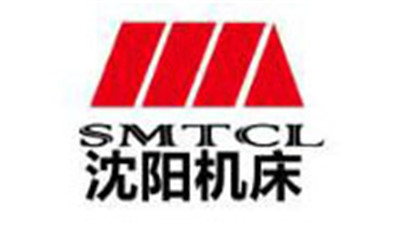How to Optimize Your Power Supply with Step Down Transformers
Table of Contents
- Understanding the Basics of Step Down Transformers for Power Supply Optimization
- Identifying Your Power Supply Needs for Effective Transformer Selection
- Evaluating Transformer Ratings: Voltage and Current Considerations
- Installation Best Practices for Step Down Transformers in Electrical Systems
- Maintenance Tips to Ensure Optimal Performance of Your Transformers
- Troubleshooting Common Issues with Step Down Transformers
- Transforming Efficiency: Insights from Industry Reports on the Role of Machine Tool Control Transformers in Modern Manufacturing
- FAQS
- Conclusion
- Related Posts
In today’s fast-changing electrical world, making sure our power systems are running efficiently is more important than ever. One key component in these setups is the Step Down Transformer, which takes high-voltage electricity and turns it into a safer, lower voltage — making everything safer and more efficient, no matter the application. Interestingly, a recent industry report predicts that the global market for transformers, including these Step Down models, could hit over $60 billion by 2025. That’s mainly because more and more folks are looking for energy-efficient solutions, whether it’s for homes or industries. On the company side, Dezhou Xinping Electronics Co., Ltd., has been around since March 2001 and is a big player in high-tech electronics. They focus on making precise electronic transformers, including the popular Step Down Transformers. Thanks to innovative tech and tough quality standards, they’re in a solid position to meet the rising demand and help push sustainable energy practices forward.

Understanding the Basics of Step Down Transformers for Power Supply Optimization
Step-down transformers are pretty important when it comes to making sure our power systems run smoothly. Basically, they take in high voltage and turn it down to a level that's usable for different kind of devices and setups. If you work in power management or engineering, getting a grip on how these things work is kind of a must. I mean, according to the International Energy Agency, they’re responsible for about 36% of global electricity losses—crazy, right? So, using the right step-down transformers can really help boost energy efficiency and, bonus, cut down on costs. Who wouldn’t want that?
When you're choosing a transformer, it’s worth paying attention to a few key things like how efficient it is, how much load it can handle, and how it manages heat. Industry folks have found that a transformer running at around 95% efficiency can save thousands of dollars each year—imagine that! Plus, picking the right one and installing it properly can prevent overheating issues and even help your gear last longer.
And it’s not just a trend—demand for these energy-smart solutions is definitely on the rise. Experts say the market could hit around USD 8.5 billion by 2026, as more businesses focus on being green and saving money at the same time.
Identifying Your Power Supply Needs for Effective Transformer Selection
When you're working on optimizing your power setup with step-down transformers, the first thing you wanna do is really nail down what your power needs are. I mean, start by looking closely at the specs of the devices you're planning to run. That means understanding their voltage requirements, how much current they draw, and their overall power usage. Having a clear list of these details helps you figure out exactly how much power you need and what kind of voltage reduction will work best for your setup.
Once you’ve got a handle on that, the next step is picking out the right transformer. Things like efficiency, voltage ratings, and size matter a lot. And don't forget to think ahead—if you’re planning for any future expansion, it might be a good idea to go for a transformer with a bit more capacity than you currently need. That way, you can avoid headaches later on. Also, take a peek at the materials and design of the transformer because they can really affect how well it performs and how long it lasts. Doing this kind of careful assessment ensures you end up with a transformer that not only fits your current needs but can also handle whatever you might throw at it down the road.
Evaluating Transformer Ratings: Voltage and Current Considerations
When you're working on optimizing your power supply with step-down transformers, it’s really important to pay close attention to their ratings—especially voltage and current. Basically, a transformer’s voltage rating tells you the maximum voltage it can comfortably handle, while the current rating shows the most load it can support without overheating or getting damaged. For example, if you have a transformer rated at 240V/120V and 1000VA, it can supply up to about 8.33 amps on the secondary side. So, you want to make sure your connected load doesn’t go over that limit—that’s kind of a no-brainer but super important to keep in mind.
Also, different setups have different needs. According to NEMA, it’s a good idea to run a transformer at about 80% of its rated capacity—that helps it last longer and keeps it from overheating. Say you’re using that same 1000VA transformer—you might want to load it with around 800VA. That way, you keep a safe margin, and it’s more efficient, too. This small bit of extra caution really pays off, because it cuts down on energy losses and helps your system stay solid over time. Knowing these little details makes all the difference when choosing the right transformer, whether it’s for industrial or commercial stuff, and it’s key to keeping things reliable and running smoothly in the long run.
Installation Best Practices for Step Down Transformers in Electrical Systems
When you're installing step-down transformers in your electrical setup, it’s really important to follow some best practices to make sure everything works smoothly and stays safe. First off, pick a spot that’s dry, well-ventilated, and free of anything that could block airflow or cause trouble. The transformer should be mounted securely on a stable surface, and it’s a good idea to check that you’re also following your local building codes. Giving it enough space around it is key — that way, air can circulate properly, keeping the unit cool and preventing it from overheating.

Don’t forget about the wiring, either. Make sure all connections are tight and properly insulated, and use the right size wires so they can handle the expected load without getting too hot. Another super important part is grounding. A solid ground connection helps reduce electrical noise and keeps everything safe by providing a safe path for any fault currents. Before turning on the transformer, double-check all your connections and settings based on what the manufacturer recommends.
And here’s a pro tip — regular maintenance is a must. Keep an eye out for stuff like rust or corrosion, which can lead to unexpected failures if left unchecked. Following these simple tips really helps keep your system running efficiently, reliably, and safely. Trust me, a little extra effort here goes a long way!
Maintenance Tips to Ensure Optimal Performance of Your Transformers
Keeping your power supply systems running smoothly really boils down to managing step-down transformers effectively. Regular maintenance is key—things like Reliability Centered Maintenance (or RCM) can make a big difference. It helps you figure out which transformers are most critical and digs into the root causes of any issues. Basically, it’s about being proactive instead of reactive, so you can craft tailored strategies that keep things running at peak performance and avoid those frustrating unexpected outages.
And don’t forget, using tools like Digital Twins and Artificial Intelligence can take your maintenance game to the next level. These techs give you real-time insights and predictive analytics, so you can spot trouble before it happens and plan repairs more efficiently. Then there’s explainable AI, which helps make sense of complex maintenance challenges—making decision-making clearer and more confident. By embracing these advanced practices, you can help ensure your step-down transformers stay efficient and reliable, which ultimately means a more stable power supply for everyone. It’s about staying ahead of the curve and keeping things seamless.
Troubleshooting Common Issues with Step Down Transformers
When you're working with step-down transformers, you might run into a few common issues that can mess with performance and efficiency. One of the most frequent problems? Overheating. This usually happens if the transformer gets overloaded, making the coils run hotter than they should. To avoid this, it’s a good idea to keep an eye on the load and make sure it stays within the transformer’s recommended limits. Also, don’t forget to give it some proper ventilation — better airflow around the device really helps to cool things down.

Another thing you might notice is electrical noise, which can cause interference, especially if you're dealing with sensitive electronics. This can happen if the connections aren’t solid or if there are harmonics messing up the system. To sort this out, double-check that all your wiring is secure, and maybe add some filters to cut down on the noise. It’s also smart to inspect your wires for any damage or wear — catching issues early can save you a lot of headaches later. Regular maintenance and quick check-ups are key to making sure your step-down transformers keep working smoothly at their best.
Transforming Efficiency: Insights from Industry Reports on the Role of Machine Tool Control Transformers in Modern Manufacturing
The modern manufacturing landscape is increasingly reliant on advanced technologies to enhance productivity and efficiency. Central to this evolution is the pivotal role of machine tool control transformers, which facilitate seamless operations within manufacturing systems. These transformers are essential in ensuring that machinery receives the correct voltage and power levels, thus minimizing downtime and maximizing output. According to industry reports, the adoption of JBK Control Transformers has become a standard practice, reflecting a commitment to quality and precision in manufacturing processes.
One notable feature of the JBK Control Transformer, in line with the JB/T5555-2013 standards, is its capacity to operate effectively under varying input voltages, specifically AC 380V-427V-480V at 50Hz. This versatility ensures that manufacturing setups can remain agile and responsive to fluctuations in operational demands. Furthermore, the transformer boasts a no-load current that is less than 12% of the rated current, which signifies enhanced energy efficiency and reduces operational costs. Manufacturers can also benefit from customized solutions tailored to their specific requirements, allowing for a more integrated and efficient manufacturing process. As industries continue to evolve, the importance of robust and reliable machine tool control transformers cannot be overstated.
FAQS
: Step down transformers efficiently convert high voltage input to lower voltage output, making them suitable for various applications and helping to optimize power supply systems.
Implementing step down transformers can enhance energy efficiency and significantly reduce operational costs, as they help minimize electricity distribution losses that account for about 36% of global losses.
Key factors include efficiency ratings, load capacity, and thermal management, which are crucial for selecting and installing transformers properly.
It is advisable to operate a transformer at 80% of its rated capacity to reduce the risk of overheating and extend its lifespan.
A transformer operating at 95% efficiency can save thousands of dollars annually in energy costs compared to less efficient models.
Regular maintenance strategies, such as Reliability Centered Maintenance (RCM), help evaluate transformers’ criticality and develop tailored strategies for optimal performance.
Technologies like Digital Twin and Artificial Intelligence enable real-time monitoring and predictive analytics, allowing for better anticipation of potential failures and streamlined repair processes.
The market for energy-efficient transformers is projected to reach USD 8.5 billion by 2026 as businesses prioritize sustainability and cost optimization.
Understanding voltage and current ratings ensures that the connected load does not exceed the transformer’s capacity, preventing overheating and sustaining damage.
Explainable artificial intelligence assists in understanding complex maintenance challenges, thereby improving decision-making processes in energy systems.
Conclusion
In the article 'How to Optimize Your Power Supply with Step Down Transformers,' we dive into the basics of what these transformers are all about and why they’re pretty important when it comes to improving how efficiently your power system runs. We start with a simple overview to help you get a handle on how step down transformers work and where they can be used. From there, we guide you through figuring out exactly what your power needs are—so you can pick the right transformer with the right voltage and current ratings without any hassle.
We also touch on the best ways to install these units, making sure you do it safely and properly. Plus, we’ve included some handy maintenance tips to keep your transformers running smoothly and some troubleshooting advice for those pesky issues that might pop up along the way. As a top manufacturer in high-precision electronic transformers, Dezhou Xinping Electronics Co., Ltd. brings a lot of know-how to the table, helping both industry pros and everyday folks who want reliable solutions to boost their power supplies.
Overall, this piece aims to make understanding and using step down transformers a bit easier and more approachable for everyone interested in making their electrical setups better.
Related Posts
-

How to Choose the Right Constant Voltage Transformer for Your Industrial Application
-

The Future of Enhancing Device Performance with Chip Common Mode Chokes Inductor
-

The Future of Efficient Power Solutions with 30 Kva Transformers
-

How to Optimize Power Distribution with Phase Shifter Transformers
-

5 Essential Tips for Maximizing Efficiency in Your 1000 KVA Transformer Operations
-

The Future of Innovative Applications in Aluminium Coil Technology
Blog Tags:


















